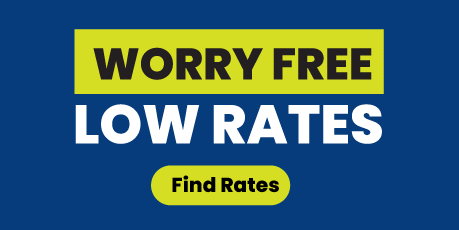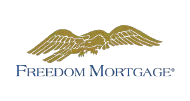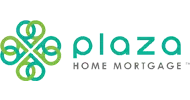FHA 203K Home Improvement Mortgage Loan


What is an FHA 203K Mortgage Loan?
Under the Federal Housing Administration, which was created to provide relaxed underwriting and loan approval guidelines for primary residence homeowners and homebuyers, the FHA Mortgage Loans offer existing homeowner's and home-buyers the ability to renovate, remodel and improve the property.
An FHA 203K home improvement mortgage loan gives homebuyers and existing homeowners the ability to finance the cost of renovations and home improvements into their first lien position mortgage loan.
An FHA 203K, first lien position mortgage loan, offers the lowest interest rates and terms when compared to second mortgages, home equity lines of credits (HELOCS) and personal loans.
The FHA 203K mortgage loan is a Federally insured mortgage loan program administered by the Federal Housing Administration.
FHA loans provide a borrower paid FHA mortgage insurance policy that protects the lender from loan losses that may occur in the event of a mortgage default.
How does an FHA 203K Home Improvement Loan work?
FHA 203K can be used to purchase a home or refinance a home and add in the cost of repairs or improvements to the new loan amount.
The amount of home improvements cost that are financed into the new loan will be held in escrow until repairs are completed and verified by an FHA-approved inspector.
10% of the cost of repairs will be held until the entire scope of work is completed and verified by an FHA-approved inspector.
To prepare for an FHA 203K loan, borrowers should complete a brief feasibility study and due diligence to verify for budgets and estimations.
8 Required Steps for FHA 203K
- Prepare an itemized list of improvements
- Collect bids from reputable contractors
- Get pre-approved with a mortgage lender
- Estimate “AS IS” home value and “After Improvements” real estate value
- Verify final estimations and lending terms
- Submit loan application and required documents
- Clear underwriting conditions
- Schedule Closing and close and fund.
What are the Benefits of an FHA 203K Loans?
Lower Down Payment Requirements
One of the main benefits of FHA 203K loans is the low-down payment requirement. You can put down as little as 3.5% of the purchase price of the property.
Flexible Repayment Terms
FHA 203K loans offer flexible repayment terms like 10, 15, 20, and 30 year terms. These loan terms give you the ability to lower your monthly payment by selecting a longer-term mortgage.
Competitive Interest Rates
FHA 203K loans offer competitive mortgage interest rates because these loans are insured by the government. The interest rates for FHA 203K loans are typically lower than those for conventional loans.
Increases Property Value
A huge benefit of FHA 203K loans is that they increase the value of your property.
renovating your home, you can improve its functionality and aesthetics, making it more attractive to potential buyers if you decide to sell in the future.
How to determine FHA 203K loan amount?
FHA underwriting guidelines take the lessor of 2 different mathematical approaches to determine the new loan amount for home improvements and renovations.
FHA “AS IS” Appraisal plus cost of improvements and repairs
Using this approach, the new maximum loan amount would be calculated by taking 97.75% of the AS IS appraised value plus the cost of improvements.
Example:
Appraised Value: $ 200,000
Appraised Value x 97.75% LTV = $ 195,500
Cost of Repairs: $ 20,000
Maximum new FHA 203K loan amount = $ 215,000
FHA “After Value” Appraisal with 110% loan to value
The FHA 203K after value appraisal determines the final value of the home based on all proposed repairs and improvements being completed.
In accordance to FHA guidelines, the new loan amount can be up to 110% LTV of the “after value” appraisal.
Example:
After Value Appraised Value: $ 220,000
Maximum new loan amount is 110% LTV x $ 220,000 = $ 242.000
Given the two examples, FHA guidelines would limit the maximum new loan amount to $215,000.
Two Types of FHA 203K Loans?
FHA Standard 203K
There are two types of FHA 203K loans: the standard 203K and the limited 203K. The Standard 203K does not have a limit on the cost of repairs.
The standard 203K loan is used for major renovations that require structural changes or engineering reports.
FHA Limited 203K
The Limited FHA 203K has a set limit on the cost of repairs that can not exceed $35,000.
If the property is in a qualified opportunity zone than the cost of repairs is limited to $50,000. Each opportunity zone is allowed 15,000 FHA 203K loans per guidelines.
What are the eligibility requirements for FHA 203K?
FHA 203K are for owner occupied primary residence properties only. Borrowers must have a minimum credit score of 580 and no 30 days late rental or mortgage history in the last 12 months.
Below is a list of basic FHA eligibility Requirements
FHA 203K Credit Requirements
- 580 Minimum Credit Score
- 0 x 30 day late on rental or mortgage history in last 12 months
- 2 years of continuous employment or self-employed income
- No Foreclosure in last 4 years
- No Bankruptcy Chapter 7 in last 4 years
- Debt To Income less than or equal to 50%
- Must be owner occupied
- Residential homes with no more than 4 units
What is the FHA 203K Loan Process to get a loan?
The process of getting an FHA 203K loan is just like applying for any mortgage except for collecting estimates for repairs and improvements, and the added requirement of progress inspections by an FHA approved inspector.
Below is a step-by-step list to get an FHA 203K loan.
Step by Step Process to get FHA 203K loan
-
Finding the Right Property
The first step in the FHA 203K loan process is to find the right property. You can use a real estate agent or search online to find a property that meets your needs and budget. Keep in mind that the property must meet the minimum property standards set by the FHA.
-
Prepare a budget of the cost of repairs
Start by preparing a complete list of all the improvements and repairs that will be included in the new loan amount. Then estimate the projected cost of each repair to establish a total cost of improvements budget.
-
Collect Estimates from Contractors
Carefully screen contractors based upon previous proven work history, online reviews, and referrals. Contact each contractor and schedule a time to meet and provide work items for estimates.
Once you have identified a complete list of work items, then contact qualified contractors to collect estimates and bids for the work items listed.
Please verify each contractors proven work history, licensing, and insurance coverage.
-
Property Inspection and Appraisal
Prepare your property for the property to be inspected and appraised by the mortgage lender’s hired real estate appraiser. To maximize the value of the property per the appraisal report, it is a good idea to clean the home, and maintain the yard.
Prior to ordering the appraisal, the list of work items along with the collected bids from the contractor should be sent to the mortgage lender. The mortgage lender will forward this information to the assigned real estate appraiser to be considered in determining your “after value” appraisal.
-
Renovation Budget
Once the property inspection and appraisal are complete. The final “after value” appraisal will be sent to the lender’s underwriting for final approval.
Upon verification that all underwriting guidelines have been satisfied the loan will be designated as clear to close.
Final Loan Approval and Disbursement
After the renovation budget is approved, the loan can be approved and disbursed. The loan amount will be based on the value of the property after the renovation is complete.
The funds will be disbursed to the contractor as the renovation work progresses based upon the FHA-inspector verifying completed work.
Homeowner Tips for Success with FHA 203K Loans
Work with an Experienced Contractor
Work with a fully vetted, licensed and insured contractor. The most important part of any construction process is which contractors to hire.
An experienced contractor will have a thorough understanding of the FHA 203K loan process and can help you stay on budget and on schedule.
Plan for Contingencies
When creating your renovation budget, it is important to plan for contingencies. Unexpected expenses can arise during the renovation process, so it is important to have a contingency fund to cover these expenses.
Stay Involved in the Renovation Process
Staying involved in the renovation process can help you ensure that the work is being done to your satisfaction.
Regularly communicate with your contractor and monitor the progress of the renovation.
FHA 203K Conclusion
FHA 203K loans offer an excellent option for homebuyers who want to purchase and renovate a property. By understanding the eligibility requirements and loan process, you can take advantage of this program to finance your dream home. With the right planning and execution, you can successfully renovate your home and increase its value.







